&&
Evasion of Pursuit
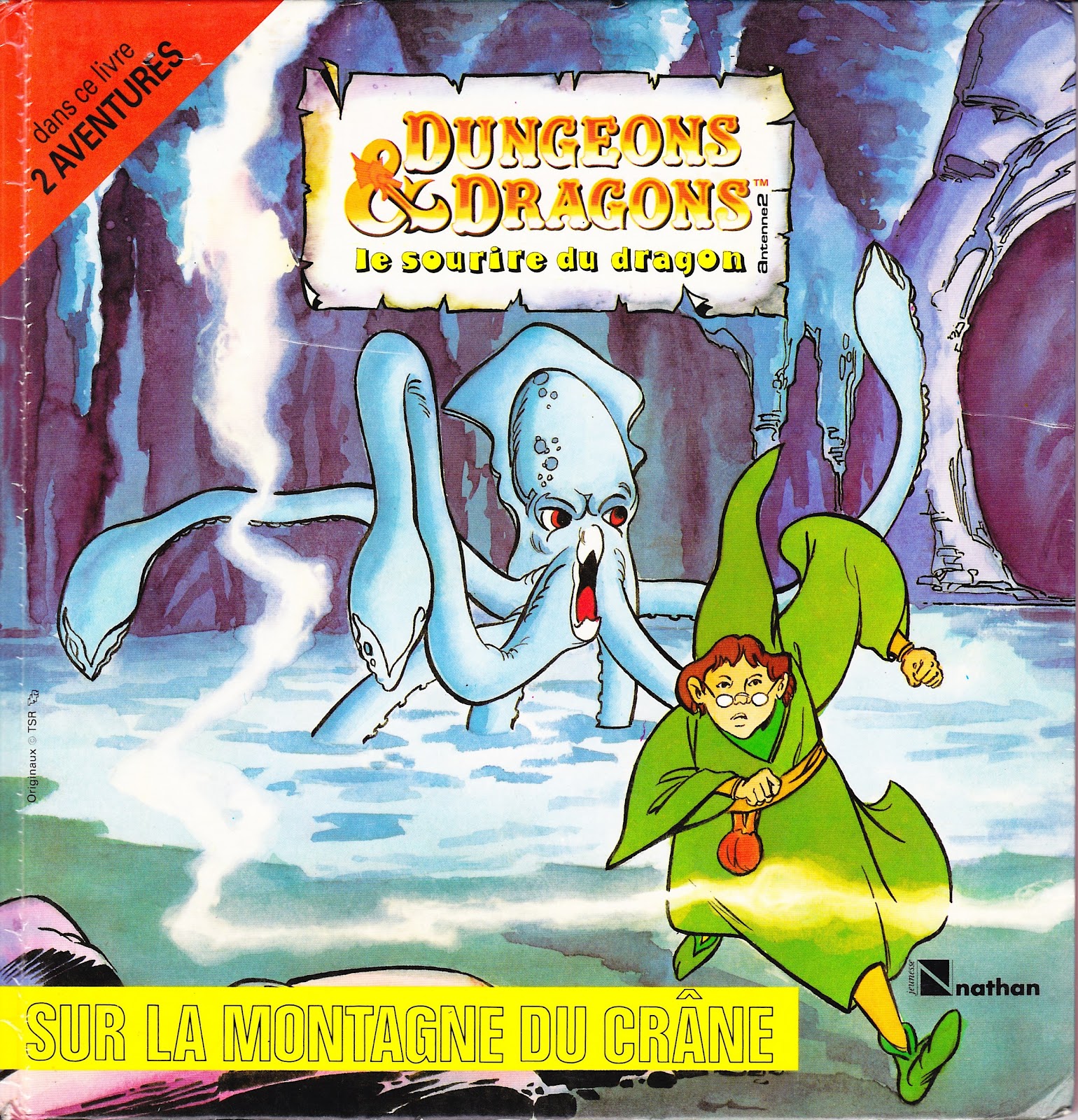

|
|
|
 |
|
|
|
|
|
|
|
|
There are two cases of Pursuit &&Evasion of Pursuit.
The
first is in underground situations,
and
the second is in outdoor settings.
There are various special circumstances which pertain to each case so each will be dealt with separately.
Pursuit And Evasion In Underground Settings:
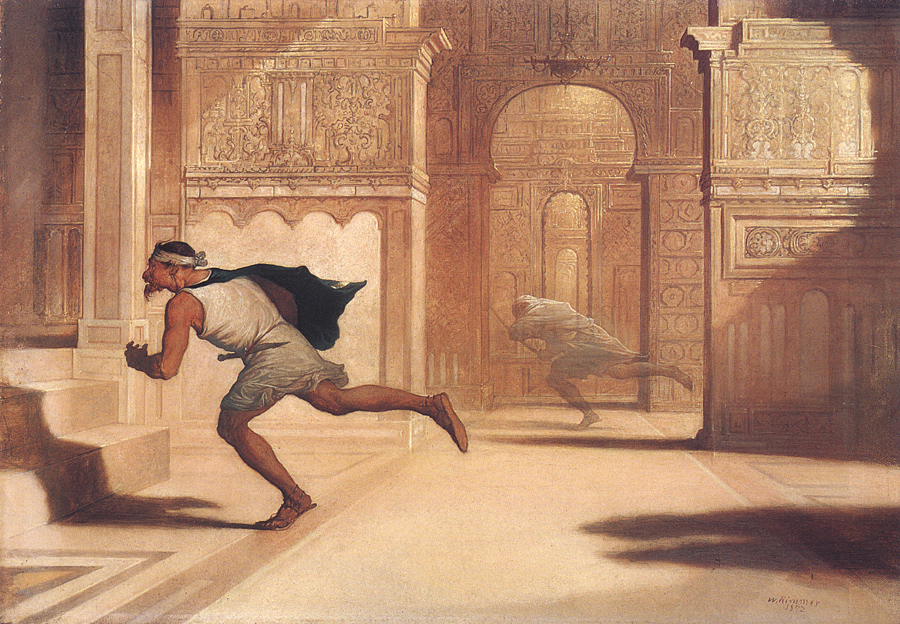
When PCs with attendant
hirelings
and/or henchmen, if any,
elect to retreat or flee
from an encounter with a monster ar monsters,
a possible pursuit situation
arises.
Whether or not pursuit will
actually take place is dependent upon the following:
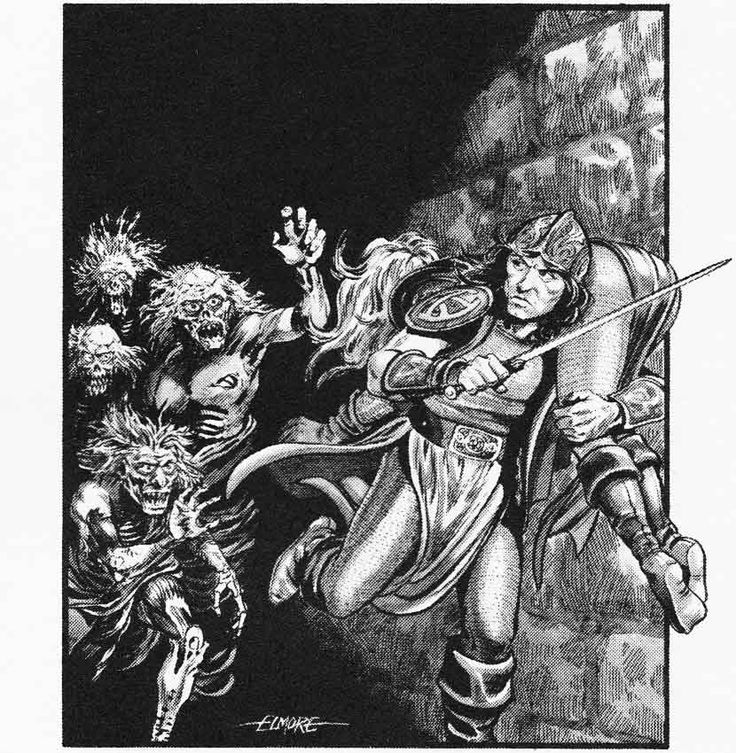
1. If the matrix or key states
that the monster(s) in question will pursue, or
if the MM
so states, then pursuit will certainly occur.
2. If the monster
or monsters encountered are semi-intelligent or under,
hungry, angry, aggressive,
and/or trained to do so, then pursuit will be
80% likely to occur (d10,
1 through 8).
3. If the monster or monsters
encountered are of low intelligence but
otherwise suit the qualifications
of 2., above, then pursuit will occur
with the following probabilities:
A. If
the party outnumbers the potential pursuers, then pursuit is 20% likely.
B. If
the party is about as numerous as the potential pursuers, then pursuit
is 40% likely.
C. If
the party is outnumbered by the potential pursuers, then pursuit is 80%
likely.
D. If
condition C. exists, and furthermore, the potential pursuers conceive of
themselves as greatly superior to the party,
then
pursuit is 100% certain.
Pursuit will have 3 separate cases:
1. The pursued are faster
than the pursuers:
Unless there are extenuating
circumstances,
such as a ranger
NPC ar an invisible stalker or a slithering tracker pursuing,
then pursuit will end as
soon as any one of the following conditions is met:
A. The
pursued are in sight but over 100' distant; or
B. The
pursued are out of sight and were over 50' distant when they so left the
perception of the pursuer(s); or
C. Pursuit
has continued over 5 rounds, and the pursuer has not gained perceptibly
upon the pursued.
2. The pursued are of
equal speed to the pursuers:
As in case 1. above, pursuit
will end as soon as any 1 of the following conditions are met:
A. The
pursued are in sight but over 150' distant; or
B. The
pursued are out of sight and were over 80' distant when they left the perception
of the pursuer(s); or
C. Pursuit
has continued over 1 turn, and the pursuer has not gained perceptibly upon
the pursued.
3. The pursuer is faster
than the pursued:
The pursuit will be broken
off only if one of the following occurs:
A. The
pursued are out of sight and were over 200' distant when they left the
perception of the pursuer(s); or
B. The
pursuer is unable to continue due to reasons of physical endurance.
Modifiers To Pursuit:
There are several circumstances which will affect the pursuer.
These are:
1. Barriers:
Physical or magic barriers
will slow or halt pursuit, i.e. a locked portal, a broken bridge, a wall
of fire, etc.
2. Distractions:
Actual or magic distractions
will be from 10% to 100% likely to cause pursuit to falter or cease altogether.
For example, a dancing lights
spell moving away from a fleeing party which has extinguished its light
sources might distract pursuers,
just as a phantasmal force
of a strong helper joining the pursued might cause the pursuers to cease
pursuit.
Similarly, if the pursued
passed through or near some other creatures which would be hostile to the
pursuing force,
or at least not friendly
to the pursuers,
then it is quite possible
that the creatures passed through and the pursuers would become embroiled.
N.B.: The likelihood
of any distraction being successful is a matter for individual adjudication
by the DM,
using AD&D principles
and common sense as they apply to the particular circumstances prevailing.
There are also 2 sub-cases
here:
A. Food:
Food, including rations and/or wine,
will
be from 10% to 100% likely to distract pursuers of low intelligence or
below,
providing
the food/wine is what they find palatable.
Roll
a d10 to find the probability, unless you have a note as to how hungry
or food-oriented the creatures are.
Add 10%
to the result for every point of intelligence below 5,
and give
a 100% probability for non-intelligent creatures pursuing.
If probability
is under 100%,
roll
the d10 a second time,
and if
the result is equal to or less than the probability determined,
then
the pursuers break off pursuit for 1 round while the food/wine is consumed.
B. Treasure:
Treasure, including precious metals, gems, jewelry, rare stuffs such as
ivory or spices, valuable items,
and/or
magic will be 10% to 100% likely to cause pursuers of low or greater intelligence
to be distracted.
Pursuers
of low intelligence will have an additional 10% per 10 items (regardless
of actual value) dropped,
i.e.
20 copper pieces have a 20% additional probability of causing a distraction.
The value
of items dropped, known or presumed or potential,
will
likewise cause pursuers of average or greater intelligence to be more likely
to be distracted.
For each
100 g.p. value or potential value, add 10% to base probability.
Roll
the d10 a second time to see if potential and actual interest are the same,
just
as is done when food is used as a possible distraction.
(Note,
however, that very small items of value -- notably, gems and the like --
would
have a chance of going completely unnoticed in the heat of pursuit.)
If success
occurs, the pursuer will be distracted for 1 round, or the length of time
necessary to gather up the treasure,
whichever
is the greater.
3. Multiple Choice:
It will most often come
to pass that the pursued take a route which enables them to cause the pursuer(s)
to have to make decisions as to which direction the pursued took in their
flight.
Thus, at a branching passage
where there are 3 possible ways which could have been taken,
there is a basic 2 in 3
chance that the pursuer(s) will take the wrong passage.
Likewise, if there are a
door and a passage, there is a 1 in 2 chance of wrong choice.
This base chance assumes
that the pursuer cannot see the pursued when choice is made,
that sound does not reveal
the direction of flight,
that smell does not reveal
direction of flight,
nor do any other visual,
audial, or olfactory clues point to the escape path.
As DM, you will have to
adjudicate such situations as they arise.
The following guidelines
might prove helpful:
LIGHT:
Straight
line of sight is near infinite, any corner cuts distance to 60'.
NOISE:
Characters
in metal armor can be heard for 90',
hard
boots can be heard at 60',
relatively
quiet movement can be heard at 30'.
ODORS:
Normal
scent can be detected by creatures hunting or tracking by scent for several
hours --
even
in
a dungeon setting.
Scent
can be masked with various things --
mustard
powder, oil of citronella, crushed stinging nettle, etc.
Building Interiors:
Treat these settings the
same as one underground, as applicable.
Procedure For Determination
Of Evasion Underground:
If it is discovered that
a pursuit situation exists,
and the player-party elects
to evade rather than confront pursuers,
then record the relative
speeds of pursued and pursuer.
Move the pursued party as
many 10's of feet as their slowest member is able to travel,
and likewise move the pursuing
party as many 10's of feet as its fastest member can travel,
noting positions of slower
members, if any, as well.
This movement is accomplished
on the map, of course.
Three such movement phases
are (for game purposes) equal to 1 round.
At the end of any movement
portion where any number of the pursued party is within 10' or less of
any number of the pursuing party,
confrontation must take
place between the concerned members of the parties.
(At this point the remainder,
if any, of the pursued party may elect to stop flight or continue evasion
attempts as they wish.)
Also, at the end of each
movement portion it is necessary to check the 3 SEPARATE PURSUIT CASES
and any PURSUIT MODIFIERS to see if the pursued party has succeeded in
evading the pursuers.
Keep track not only of the
route of flight,
but also of the amount of
game time so spent,
as some pursuit will automatically
cease after a set period without confrontation.

Mapping
During Flight: No mapping is ever possible.
Give no distance measures
in moving the pursued.
Give no compass directions
either!
Pursuit And Evasion In Outdoor Settings:

Pursuit in the outdoors is
generally similar to that in settings underground or indoors.
The 3 general rules of likelihood
of pursuit apply.
However, pursuit will certainly
continue until evasion is successfully accomplished.
In outdoor settings,
evasion is accomplished
in a different manner,
the variables being the
relative speed of movement and size of the parties concerned and the type
of terrain over which pursuit takes place.
Available light is also
a factor.
BASE CHANCE OF EVADING PURSUIT OUTDOORS: 80%
MOVEMENT SPEED ADJUSTMENT
| +10% | Pursued is faster |
| 0% | Both parties are of equal speed |
| -20% | Pursuer is faster |
TERRAIN ADJUSTMENT
| -50% | Plain, desert, open water |
| +10% | Scrub, rough, hills, marsh |
| +30% | Forest, mountains |
SIZE OF PARTIES INVOLVED ADJUSTMENT
| Pursued party totals fewer than 6 creatures | 10% |
| Pursued party totals 6-11 creatures | 0% |
| Pursued party totals 12-50 creatures | -20% |
| Pursued party totals over 50 creatures | -50% |
| Pursuing party totals fewer than 12 creatures | -20% |
| Pursuing party totals 12-24 creatures | 0% |
| Pursuing party totals over 24 creatures | +10% |
AVAILABLE LIGHT ADJUSTMENT
| Light equal to full daylight | -30% |
| Light equal to twilight | -10% |
| Light equal to bright moonlight | 0% |
| Light equal to starlight | +20% |
| Light equal to dark night | +50% |
Procedure For Determination Of Evasion Outdoors:
Upon encountering creatures
from which the player-party flees in order to evade, determine if a condition
of surprise exists.
If the player-party has
surprised the creature encountered, evasion is automatic.
If no surprise exists, then
follow the procedure below.
If the party encountering
the creatures is surprised, then no evasion is possible, and confrontation
is unavoidable.
Find the chance for evasion
by adjusting the base chance according to variables.
The pursued party rolls
percentile dice, and if the number generated is less than or equal to the
adiusted base chance of evasion,
then they have had immediate
success at eluding the pursuers.
Otherwise, pursuit continues
unless the pursuers are faster than the pursued and can close within 1
hour,
in which case confrontation
must take place.
Continuing pursuit requires
an evasion check every game hour.
After the initial check
each game hour another must be made just as is initially done,
with the added stipulation
that any result of 0% or less indicates immediate confrontation and no
further chance of evasion.
Special Note Regarding Fatigue:
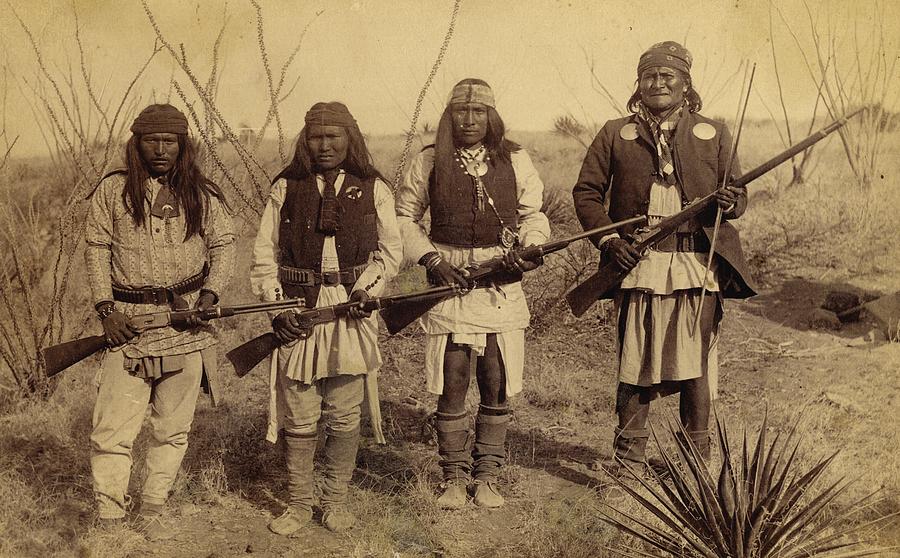
No rules for exhaustion and
fatigue are
given here because of the
tremendous number of variables, including the
stamina of the characters
and creatures involved. Thus, characters
mounted on horses have gradually
slowing movement, but this is not a
factor unless pursuing creatures
tire more or less rapidly than do the
mounts. You must judge these
factors in a case of continuing pursuit.
Fatigue merely slows movement
and reduces combat effectiveness.
Exhaustion will generally
require a day of complete rest to restore the exhausted creatures.
Always bear in mind that
humans inured to continuous
running, for example, can
do so for hours without noticeable fatigue, i.e.,
those such as Apache Indians,
Zulu warriors, etc. Do not base your
judgment an the typical
modern specimen.
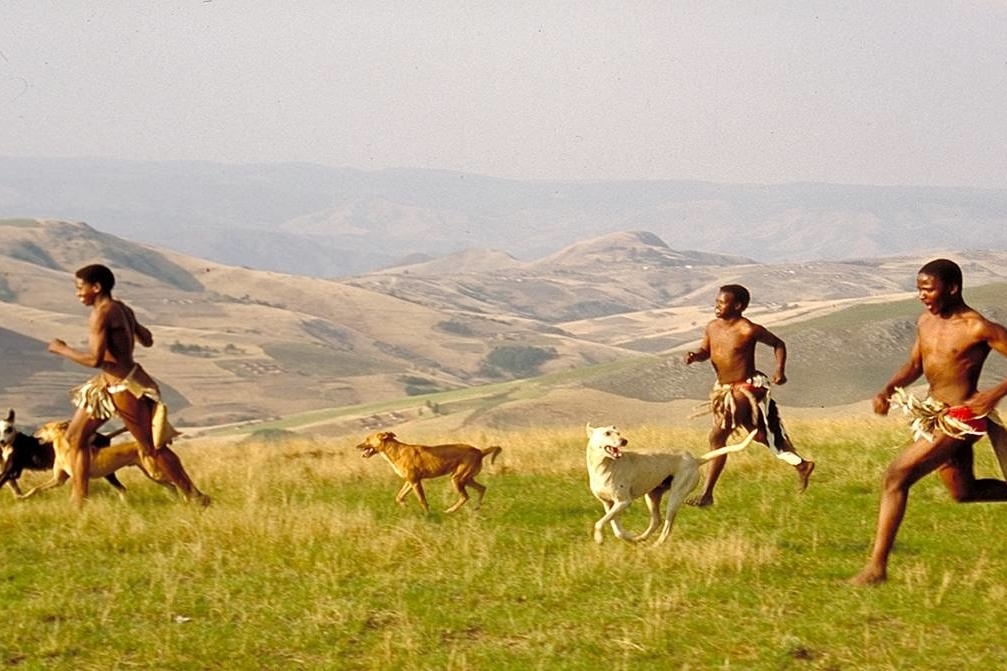
![]()
Quote:
Originally Posted by BOZ
potions and scrolls, my
man, potions and scrolls. and pre-cast spells are nice, too. i'm sure every
DM goes through this experience after a time... ![]()

Right, Boz!
The propblem with the potion is getting it out and quaffing it off takes two rounds at least, and the same for getting and reading a scroll. The good old wand and worn magic items are much faster to use, multi-shot/use, so the temptation is always there to have them.
Obmi the Dwarf had his boots of Speed and Dwarven Throwing Hammer (plus whatever defensive items I decided he needed for an encounter, protection and absorption) and believe me I made sure he had logical means of evading pursuit <stick out tongue>
Cheers,
Gary